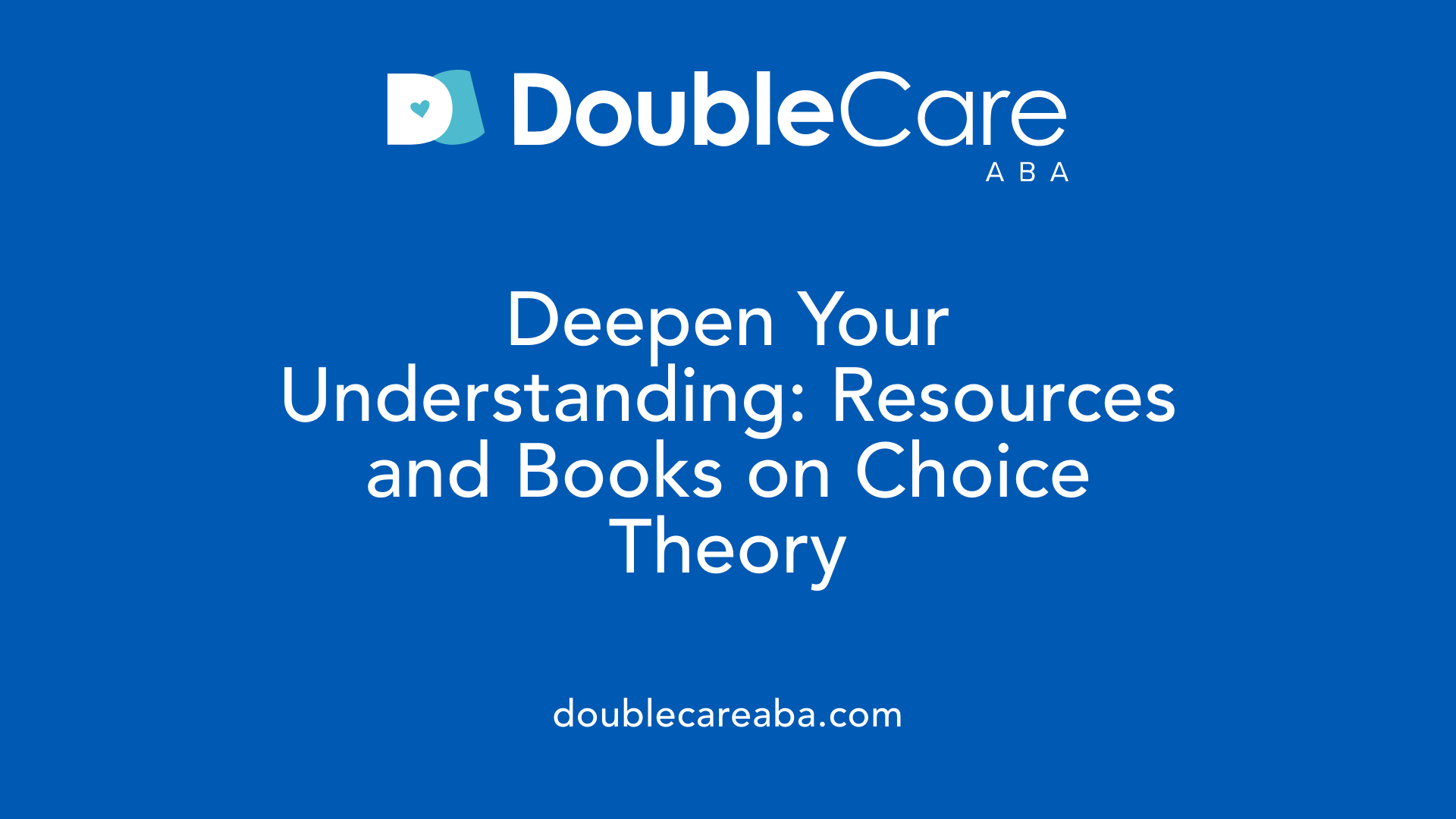What Is Choice Theory?
Understanding the Foundations and Impact of Choice Theory

Unlocking Human Motivation and Behavior
Choice Theory is a comprehensive psychological framework that offers valuable insights into human motivation, behavior, and relationships. Developed by William Glasser, this approach emphasizes personal responsibility, internal control, and the pursuit of fulfilling basic human needs. As an evolving paradigm rooted in decades of research and practical application, Choice Theory is transforming practices in psychology, education, and counseling. This article provides an in-depth exploration of its core concepts, development, applications, and significance, offering readers a thorough understanding of how Choice Theory can enhance personal growth and interpersonal relationships.
Core Concepts and Fundamental Principles of Choice Theory

What is the core concept of Choice Theory?
Choice Theory, developed by William Glasser, offers a new perspective on human behavior. At its heart, the theory states that all behavior is purposeful and aimed at satisfying five basic needs: survival, love and belonging, power, freedom, and fun. These needs drive every action and decision we make.
A significant emphasis in Choice Theory is personal responsibility. It insists that individuals can only control their own thoughts, feelings, and actions. We have limited influence over others but possess internal control over our choices.
One of the most vital ideas is the 'Quality World.' This is like a personal mental scrapbook filled with images of everything we value—people, possessions, ideas—that increase our sense of well-being. Our behaviors are attempts to close the gap between our perception of reality—the 'Perceived World'—and what we desire in our 'Quality World.' When there's a mismatch, frustration signals us to take action.
The 'Quality World' and its role in human motivation
The 'Quality World' shapes our motivations and interactions. It consists of our mental pictures of what we believe will make us happy or fulfilled. These images include our role models, possessions, beliefs, and ideals.
Our perceptions of the world are subjective and influenced by personal experiences and values. When our perceived world aligns with our 'Quality World,' we experience satisfaction. When it doesn't, dissatisfaction or frustration motivates us to change our behavior to better meet our needs.
Total Behavior: acting, thinking, feeling, and physiology
Choice Theory explains that human behavior comprises four components: acting, thinking, feeling, and physiology. These elements are interconnected, working together simultaneously.
While individuals can control their acting and thinking—such as choosing words or thoughts—they have less direct control over feelings and physiological responses, which often respond automatically. Still, changing thoughts and actions can influence feelings over time.
Personal responsibility and internal control psychology
A central belief of Choice Theory is personal responsibility. It rejects external control psychology, which blames outside forces for our actions. Instead, it promotes internal control—recognizing that we are responsible for our choices and behaviors.
This mindset encourages individuals to make more conscious, responsible decisions that meet their needs through ethical and caring ways, fostering healthier relationships and personal growth.
The significance of relationships and responsible decision-making
Many psychological problems and conflicts stem from relationship issues. Choice Theory underscores the importance of strong, respectful relationships—such as between parents and children, spouses, teachers and students, or managers and workers.
It advocates for responsible decision-making guided by the 'Seven Caring Habits'—supporting, encouraging, listening, accepting, trusting, respecting, and negotiating differences—and opposition to the destructive 'Seven Deadly Habits,' like criticizing and blaming.
Focusing on choices and understanding how personal actions affect relationships allows individuals to build more satisfying and meaningful connections, ultimately leading to improved mental health and life satisfaction.
Development and Evolution of Choice Theory Over Time
How did Choice Theory develop and evolve over time?
Choice Theory was born out of William Glasser's extensive experience in psychology and counseling, spanning roughly five decades. It began in the 1960s with the introduction of Reality Therapy in 1965, which focused on helping individuals take responsibility for their choices. Glasser observed that most psychological problems originated from relationship issues and external control conflicts.
Over the years, he refined this approach, embedding core ideas like the Five Basic Needs—survival, love and belonging, power, freedom, and fun—and introducing the concept of the 'Quality World,' which contains mental pictures of what individuals value most. These concepts help explain how personal perceptions influence behavior.
Throughout the late 20th century, Glasser developed the Ten Axioms of Choice Theory—fundamental principles guiding decision-making, emphasizing the idea that individuals only control their own behavior, not others. This shift was a move away from traditional external control psychology, which he found destructive.
In 1996, the transition from Control Theory to what is now known as Choice Theory was formalized. This change aimed to better reflect the theory's core emphasis on personal choice, internal motivation, and responsibility. It marked a philosophical shift toward internal control rather than external manipulation.
Throughout its evolution, Choice Theory integrated principles from humanistic psychology and internal control psychology, promoting personal freedom, self-responsibility, and healthier relationships. Its development is marked by continuous research, practical applications in education, therapy, and management, and an ongoing effort to refine understanding of human motivation and behavior.
Application of Choice Theory in Psychology and Education

How is Choice Theory applied in psychology and education?
Choice Theory, created by William Glasser, is widely used in both psychology and educational settings to encourage individuals to take responsibility for their own behaviors. Central to this approach is the idea that people can only control their own actions, thoughts, and feelings, not those of others. This focus on self-control and personal responsibility helps foster healthier relationships and better emotional well-being.
In classrooms, educators incorporate Choice Theory by offering students meaningful choices in their learning activities and assignments. This approach supports motivation and engagement because students feel more in control of their learning process. For example, teachers may allow students to select topics for projects or choose between different types of assignments. This autonomy boosts their enthusiasm and commitment, leading to improved academic performance.
Many schools, such as Great Valley Academy, adopt the Glasser Model, emphasizing the importance of relationships. They promote the Seven Caring Habits—supporting, encouraging, listening, accepting, trusting, respecting, and negotiating differences—to build a positive and trusting classroom environment. These habits strengthen the teacher-student and peer relationships, making students feel safe, cared for, and connected.
Choice Theory also emphasizes developing social-emotional skills and increasing self-awareness. As students learn to understand their needs—such as love and belonging, power, or fun—they can better comprehend their behaviors and make responsible choices. Classroom activities often include regular meetings that foster communication, respect, and understanding among students and teachers.
Overall, Choice Theory’s practical application in psychology and education centers on empowering individuals to take charge of their own lives. By focusing on choices and relationships, it helps reduce negative behaviors, support personal growth, and promote a positive, collaborative environment.
| Application Area | Practice Focus | Expected Outcomes | Additional Details |
|---|---|---|---|
| Counseling and Psychotherapy | Promoting internal control, responsibility, and relationship repair | Reduced conflicts, improved self-awareness, healthier relationships | Developed from Reality Therapy, emphasizing purpose-driven behavior |
| Classroom Management | Offering choices, implementing classroom meetings, relationship-building | Increased motivation, engagement, social skills, and academic success | Incorporates Seven Caring Habits and collaborative activities |
| Student Motivation and Engagement | Using choices in assignments, fostering autonomy | Greater enthusiasm, persistence, and learning outcomes | Focus on meeting basic needs of students through choice-making |
| Self-Control and Decision-Making | Teaching responsible decision-making aligned with needs | Enhanced self-control and responsible behaviors | Based on understanding personal 'Quality World' and the 'Perceived World' |
This approach underscores the importance of personal responsibility and relationship focus in both therapy and educational contexts, aiming to nurture well-rounded and motivated individuals.
Resources for Further Learning and Addressing Misconceptions

Where can I find authoritative resources and further information about Choice Theory?
To explore Choice Theory in depth, the William Glasser Institute is the most reputable source. Their affiliated websites provide a comprehensive collection of materials such as books, videos, educational courses, and certification programs that promote understanding and practical application of Choice Theory.
A fundamental text to consider is William Glasser’s book "Choice Theory: A New Psychology of Personal Freedom." This publication offers detailed insights into the core principles, axioms, and philosophy behind Choice Theory. It emphasizes personal responsibility, internal control, and the importance of relationships.
Besides the primary book, academic articles and reputable online platforms related to psychology and education are valuable sources. These often discuss research findings, practical examples, and detailed explanations of how Choice Theory can be implemented across various contexts.
Some organizations dedicated to Choice Theory also maintain extensive resources, including downloadable materials and training programs. These tools are designed to educate individuals, professionals, and educators about the theory's concepts, ensuring an accurate understanding.
In summary, key resources for further learning include:
| Resource | Description | Availability |
|---|---|---|
| William Glasser Institute | Official organization promoting Choice Theory and Reality Therapy | Website, courses, publications |
| "Choice Theory" Book | Foundational text by William Glasser | Bookstores, libraries |
| Academic Journals | Research articles on psychology and education | Online databases |
| Reputable Education & Psychology Websites | Additional explanations and practical applications | Online articles and videos |
Engaging with these sources will deepen your comprehension of Choice Theory’s principles and correct common misconceptions.
The Lasting Impact of Choice Theory
Choice Theory represents a paradigm shift in understanding human behavior, emphasizing internal motivation, personal responsibility, and the importance of meaningful relationships. Its principles are applied successfully across disciplines, fostering healthier interactions, reducing problematic behaviors, and promoting mental well-being. As an evolving field rooted in the ideas of William Glasser, Choice Theory continues to inform educational practices, counseling, and personal development. Through dedicated resources, ongoing research, and practical application, it helps individuals become more aware of their choices and empowers them to lead satisfying, responsible, and connected lives.
References
- What Is Choice Theory? - GIFCT - William Glasser Institute
- Glasser's choice theory
- Choice Theory Basics | learnonline
- Quickstart Guide to Choice Theory - GIFCT
- Choice Theory
- Choice theory: A new psychology of personal freedom.
- The Impact of Choice Theory on Student Outcomes in ...
- Glasser Quality Schools
- What is Choice Theory?
- Empowering Clients through Reality Therapy and Choice ...
















